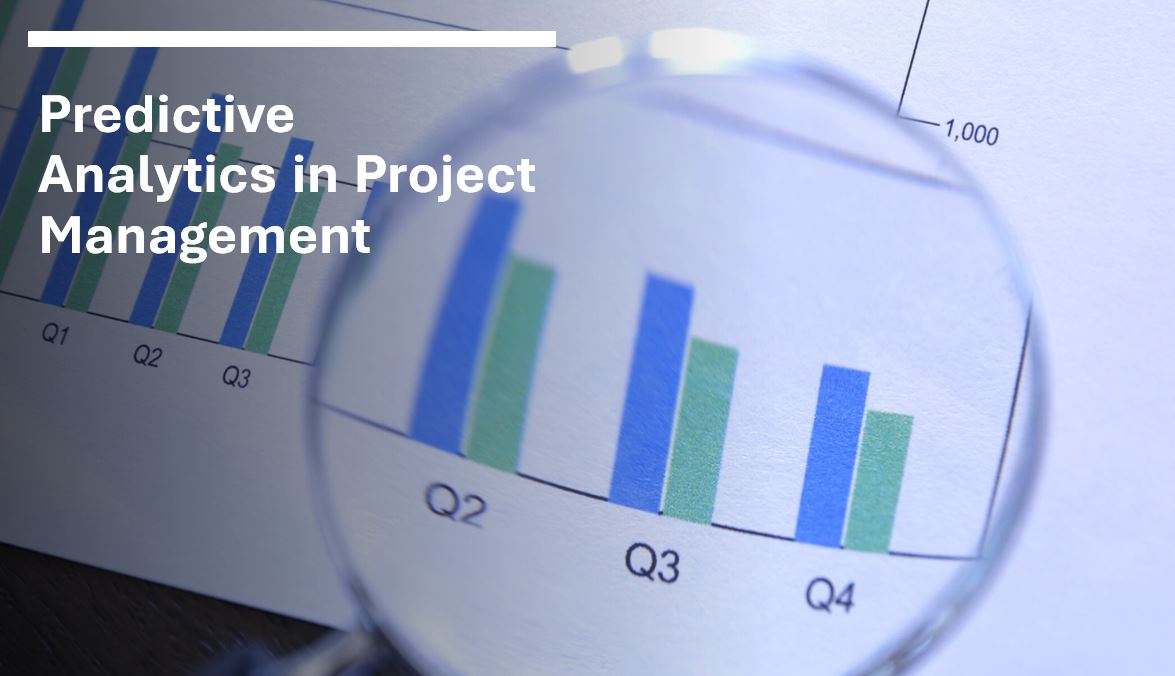Building on our exploration of real-time data in project management, this second part of our series delves into the power of predictive analytics. By anticipating potential project issues before they manifest, predictive analytics can be a game-changer in managing projects more proactively and effectively.
The Role of Predictive Analytics in Project Management
Predictive analytics uses historical data, statistical algorithms, and machine learning techniques to identify the likelihood of future outcomes based on historical data. For project managers, this means being able to foresee potential delays, budget overruns, or resource shortages and mitigating these risks before they impact the project.
Tools and Techniques for Implementing Predictive Analytics
-
Machine Learning Models: Tools like IBM Watson and Google Cloud AI offer machine learning platforms that can predict project risks based on patterns learned from historical project data. These models can forecast project outcomes, helping managers make informed decisions about risk management, resource allocation, and timelines.
-
Regression Analysis: This statistical method estimates the relationships among variables. It is used extensively in project management to predict cost overruns and end dates. Software like Minitab or even Excel can perform regression analysis to help predict project outcomes.
-
Monte Carlo Simulation: Widely used in risk management, this technique uses probability modeling to predict possible outcomes in a project. Tools like Oracle’s Crystal Ball and RiskyProject allow project managers to visualize possible risks and their impacts on project schedules and budgets.
Practical Examples of Predictive Analytics in Action
-
Construction Project: A project manager uses Monte Carlo simulations to predict the effects of weather delays on construction timelines. By understanding these potential delays in advance, they can adjust schedules proactively or prepare mitigation strategies to stay on track.
-
IT Project: In a software development project, regression analysis helps predict milestone achievements based on team velocity and past performance. This allows the project manager to reallocate resources or adjust timelines before delays become critical.
-
Marketing Campaign: Using machine learning models, a project manager can predict customer responses to a marketing campaign, adjusting strategies for higher engagement and better ROI based on predictive insights.
To effectively integrate predictive analytics into your project management toolkit, it's essential to adopt a systematic approach that encompasses data understanding, tool selection, and team training. Here's how to do it:
-
Understand Your Data: Start by conducting a thorough audit of your available data. Identify data sources, assess the quality and completeness of the data, and determine any gaps that may affect the accuracy of your predictive models. This step is crucial because the quality of your predictions will heavily depend on the quality of your data.
-
Select the Right Tools: Depending on your project's needs and the complexity of the data, choose analytical tools that best fit your objectives. For simpler projects, tools like Excel might suffice for running basic regression analyses. For more complex data sets or projects, consider advanced tools like IBM SPSS for statistical analysis or Python and R for more sophisticated machine learning models. These tools offer robust features that can handle large datasets and complex predictive models.
-
Build Predictive Models: With your data ready and the right tools in hand, begin building predictive models. Start with simpler models to establish baselines and progressively refine them as more data becomes available or as project dynamics change. Engage with data scientists if necessary to leverage their expertise in model building and validation.
-
Train Your Team: Ensure that your project management team understands how to interpret and use the insights provided by predictive analytics. Training should cover basic data literacy and extend to specific instructions on how predictive analytics apply to their daily tasks. This might include training sessions on reading data visualizations, understanding model outputs, and making data-driven decisions.
-
Iterate and Improve: Predictive analytics is not a set-it-and-forget-it tool; it requires ongoing evaluation and refinement. Regularly review the performance of your predictive models and make adjustments based on real-world outcomes and feedback. This iterative process helps to enhance the accuracy of your predictions and the effectiveness of your project management practices.
-
Embed Analytics into Decision-Making: Finally, make predictive analytics a standard part of your project decision-making process. Use predictive insights to anticipate project risks, allocate resources efficiently, and adjust strategies proactively. Embedding these practices into your project management workflow can transform how projects are planned and executed, leading to better outcomes and more efficient project delivery.
By following these steps, you can effectively integrate predictive analytics into your project management practices, transforming how decisions are made and increasing the overall success rate of your projects.
Pioneering Project Management with Predictive Analytics
As we've explored in this second installment of our series, predictive analytics can significantly enhance project management by providing foresight into potential project risks and opportunities. By adopting predictive analytics, project managers can not only avoid costly overruns and delays but also gain a competitive edge by being proactive rather than reactive.
Capitalize on Predictive Analytics for Your Projects
Don’t let your projects fall behind due to unforeseen challenges. Embrace predictive analytics and transform your approach to project management. Here are some steps to help you get started:
-
Educate Yourself and Your Team: Understanding the basics of predictive analytics is crucial. Consider enrolling in workshops or online courses that can provide you and your team with the necessary knowledge and skills.
-
Implement the Right Tools: Choose tools that fit the complexity and scale of your projects. Tools like IBM Watson, Google Cloud AI, or even simpler statistical tools can provide the insights you need to predict and mitigate risks.
-
Stay Informed: The field of predictive analytics is continuously evolving. Keep up with the latest trends and technologies by subscribing to our blog and joining our community of forward-thinking project managers.
-
Join Our PMI Chapter: Gain access to a wealth of resources and networking opportunities that can help you apply predictive analytics effectively in your projects. Visit our PMI chapter page to learn more about membership benefits and upcoming events.
By incorporating predictive analytics into your project management practices, you can ensure more successful, efficient, and predictable project outcomes. Stay tuned for the next part of our series, where we will delve into the art of data visualization to enhance communication with project stakeholders.



